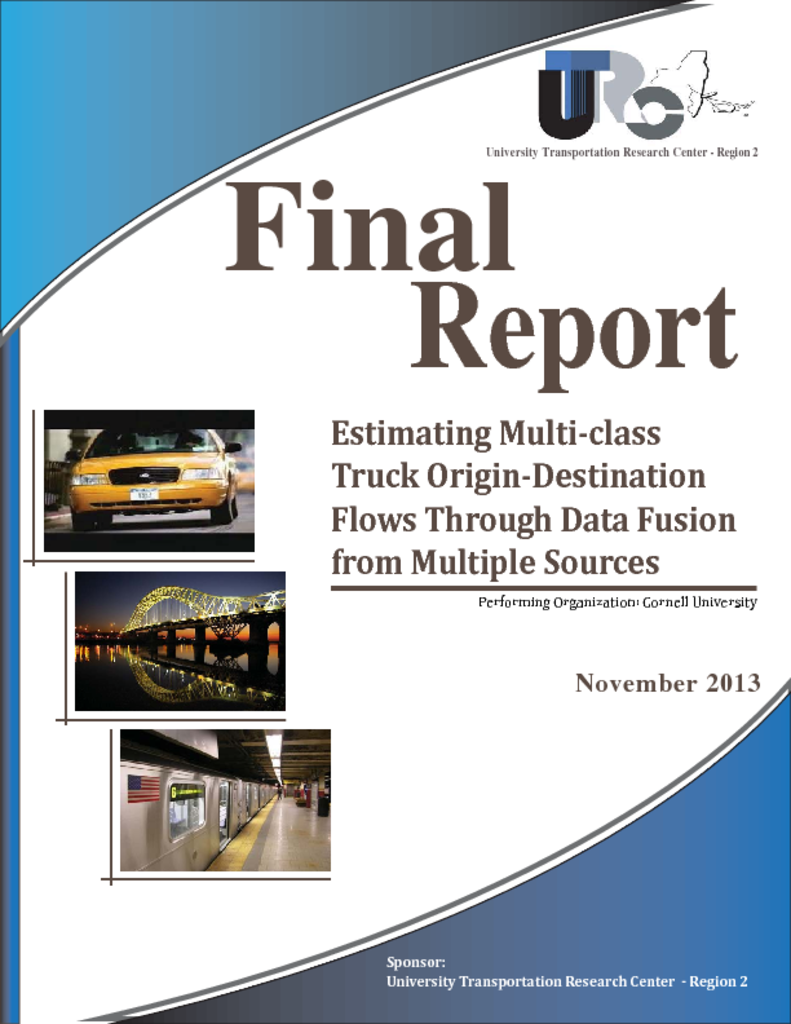There has long been interest in estimating origin-destination (O-D) matrices from link count (or other) data. For the most part, previous efforts have focused on creating O-D tables for passenger movements by automobile, using a single vehicle class. This report describes a formulation of the multiclass O-D estimation problem that is constructed to accept a variety of different types of data that relate O-D volumes to observed values. This includes traditional link count data, but also accommodates other types of data such as turning movements at intersections, partial path observations from individual vehicles, etc. This has particular interest for transportation planners interested in separating truck flows from auto flows for more effective overall system planning and management. The O-D estimation process is constructed using a probit-based stochastic model for network loading and user equilibrium. One of the advantages of using this formulation is that it makes data on partial paths of vehicles useful in the O-D estimation process, and such information is becoming more available as a result of technological changes in vehicle sensing and data exchange. The multiclass O-D estimation process is tested in two different environments – one a small network using three vehicle classes where the true O-D tables are known, and a second larger network (Rockland County, New York) using two vehicle classes where very limited data are available. The Rockland County test case demonstrates that the multiclass O-D estimation method developed in this research can successfully estimate trip tables in realistic networks, and thus has significant practical value. It also demonstrates that the addition of truck trip-end estimates based on economic activity data can change the estimated truck table significantly, and thus this data has considerable value as an augmentation to observed traffic data.




